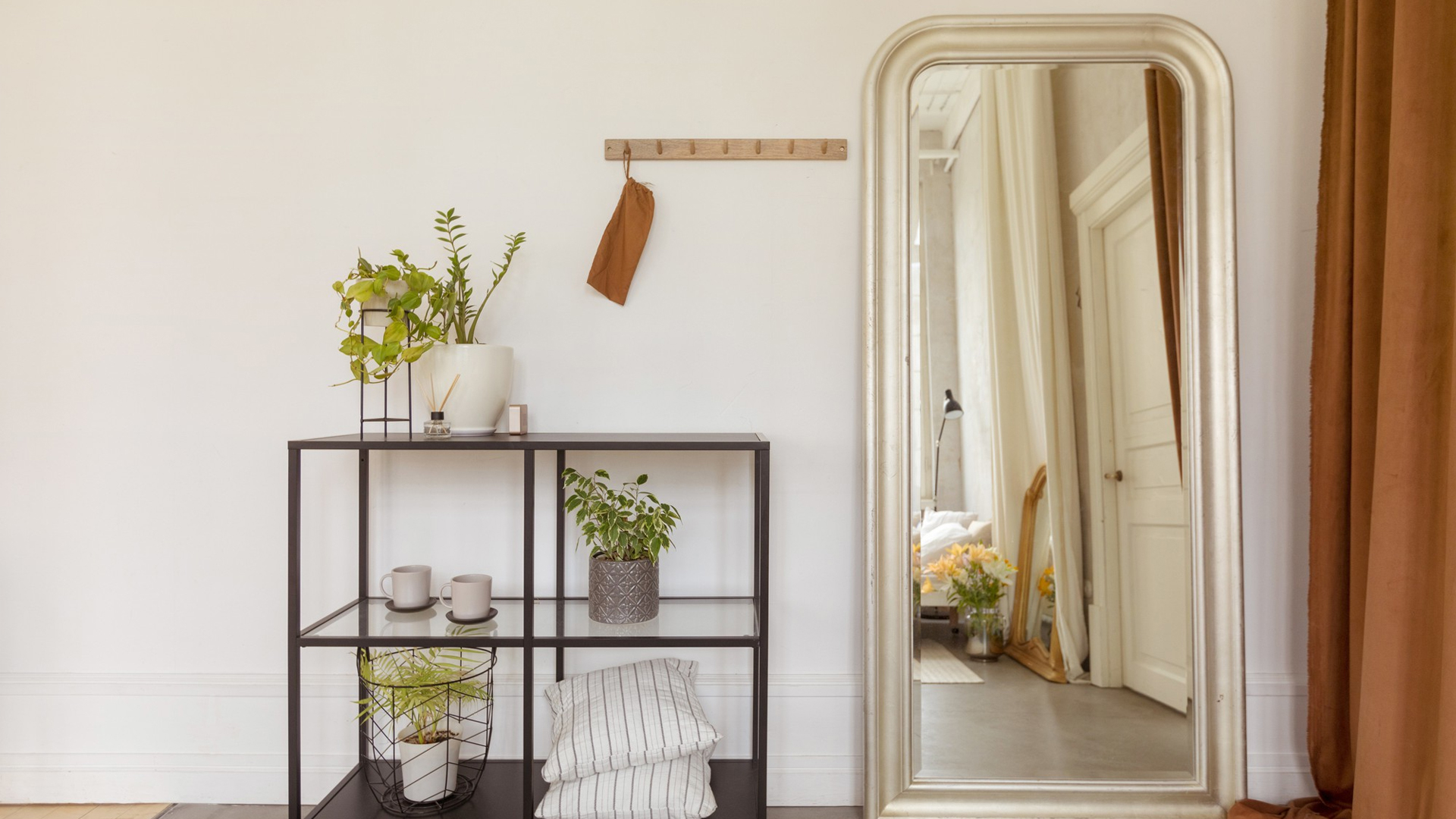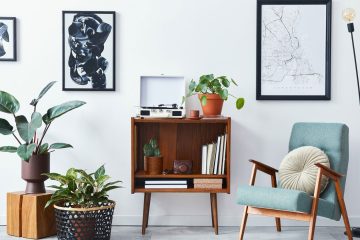Decorating a small living room can feel like a bit of a challenge, but it also presents a fantastic opportunity to get creative. The key to transforming your compact space into a cozy, functional, and stylish living room is to use smart design tricks that make the most of every square inch. Whether you’re working with a tiny city apartment or a cozy nook in a larger home, there are countless ways to make your small living room feel open, inviting, and full of personality.
In this blog post, we’ll share tips and tricks to help you decorate your small living room so that it feels spacious, functional, and beautiful—without feeling cramped. From selecting the right furniture to choosing the perfect colors and accessories, here’s how you can turn your small living room into a stylish sanctuary.
1. Embrace Light Colors to Open Up the Space
When it comes to decorating a small living room, one of the most effective strategies is to use light, neutral colors. Lighter shades reflect light, making the room feel more open and airy, whereas dark colors can make a space feel closed in.
Try these color tips:
- White, Light Gray, or Beige: These classic neutrals create a serene and spacious atmosphere. They also provide a great backdrop for introducing accent colors through accessories like throw pillows, rugs, or artwork.
- Soft Pastels: Light blues, mint greens, and blush pinks can add a soft, inviting vibe to your living room while still making it feel open.
- Monochrome Palettes: Stick to one or two complementary colors for walls, furniture, and accessories. This creates harmony in the room and avoids visual clutter.
- Accent Walls: If you love bold colors, consider using them on one accent wall rather than the entire room. A deep navy or forest green wall can create a sense of depth while keeping the rest of the space light.
2. Opt for Multi-Functional Furniture
In a small living room, every piece of furniture needs to pull double duty. Multi-functional furniture is your best friend, as it not only saves space but also makes the room more flexible and practical.
Ideas for multi-functional pieces:
- Sofa Beds: A sofa that doubles as a bed is perfect for guests and helps maximize your space without sacrificing comfort.
- Storage Ottomans: Choose an ottoman that doubles as both a coffee table and a storage unit. This is especially useful for storing blankets, toys, or remote controls.
- Nesting Tables: Instead of one bulky coffee table, use a set of nesting tables that can be spread out when needed or tucked together when not in use.
- Wall-Mounted Desks or Shelves: Consider a floating desk or a wall-mounted shelf to keep the floor space clear and make room for other activities.
- Compact Chairs or Armchairs: Look for chairs that are compact but comfortable, such as a slim armchair or a cushioned pouf, which can easily be moved around the room.
3. Use Vertical Space Wisely
When floor space is limited, look upward! Vertical space can be just as valuable for storage and decoration as floor space, so make sure you’re using your walls to their full potential.
Ideas for using vertical space:
- Floating Shelves: Install floating shelves on your walls to store books, display decor, or keep small items like plants and candles. This frees up space on your tables and keeps your room from feeling cluttered.
- Wall-Mounted Storage: Consider wall-mounted cabinets or racks to store things like media equipment, small appliances, or even decorative items. This keeps things organized without taking up precious floor space.
- Vertical Art: Hang tall pieces of artwork or a gallery wall that draws the eye upward. Vertical lines in artwork can also make the room feel taller and more expansive.
- Hanging Plants: Add greenery to your room with plants that are hung from the ceiling. This adds life to the room without taking up any floor space.
4. Choose Furniture with Slim Profiles
In a small living room, bulky furniture can overwhelm the space. Instead, opt for pieces with slim profiles that won’t crowd the room but still provide the necessary functionality.
Key furniture choices:
- Slim Sofas: Look for sofas with a narrow frame and sleek lines, rather than oversized sectionals. A loveseat or a compact 2-3 seat sofa can work well in smaller spaces.
- Transparent Furniture: Consider furniture made from glass or acrylic, such as a glass coffee table or acrylic chairs. These pieces visually take up less space and allow you to see more of the room.
- Foldable Furniture: A foldable or collapsible dining table, for instance, can save space when not in use and can be easily tucked away.
5. Add Mirrors to Reflect Light and Create Depth
Mirrors are a great way to reflect light and visually expand a small room. They can create the illusion of more space by reflecting both natural and artificial light, which brightens up the space and makes it feel more open.
Tips for using mirrors:
- Large Mirrors: Hang a large mirror on one wall to open up the space. A floor-length mirror works particularly well in a small living room, and it can also serve as a statement piece.
- Mirrored Furniture: For a glamorous touch, consider mirrored furniture such as side tables or a mirrored coffee table. These pieces reflect light and create a sense of depth.
- Clustered Mirrors: Instead of one large mirror, try a collection of smaller mirrors in a pattern to add visual interest while still creating the illusion of space.
6. Incorporate Light and Airy Fabrics
When selecting textiles, opt for light fabrics that don’t feel too heavy or overwhelming in a small space. Opting for soft, breathable fabrics can help your living room feel light and inviting.
Fabric choices:
- Linen or Cotton Curtains: Light, airy curtains allow more natural light to flow into the room, making the space feel brighter and bigger. Go for sheer or light-colored curtains that don’t block sunlight.
- Throw Blankets and Pillows: Use soft throw blankets and decorative pillows in light hues or subtle patterns to add texture without overwhelming the space.
- Light Rugs: Choose rugs in neutral tones or soft patterns that ground the space while keeping the area feeling open. A rug with a subtle pattern will add warmth without making the room feel cluttered.
7. Create Defined Zones in an Open Layout
If your small living room serves multiple purposes—like a living room, office, or dining area—it’s important to create defined zones. This will help the space feel more organized while still making it feel spacious.
Ideas for creating zones:
- Rugs to Define Areas: Use area rugs to delineate different zones in the room. A rug under the sofa creates a cozy seating area, while a smaller rug by a desk can help define a workspace.
- Room Dividers: If your space is particularly open, use a lightweight room divider or a bookshelf to separate different areas. A tall plant or a folding screen can work well in a small living room without making it feel cramped.
- Furniture Placement: Arrange furniture in a way that creates a natural flow of traffic while still keeping the room feeling open. For example, placing a sofa facing a TV and chairs positioned around a coffee table will define the seating area.
8. Maximize Natural Light
Natural light is one of the best ways to make a small space feel open and airy. Maximizing the amount of natural light in your living room will help it feel larger and more welcoming.
How to maximize natural light:
- Keep Windows Uncovered: If privacy is not an issue, keep your windows bare or use sheer curtains to allow as much natural light as possible into the room.
- Use Light Reflecting Surfaces: Choose light-colored furniture and decor items that will reflect light and make the space feel brighter.
- Place Furniture Strategically: Avoid blocking windows with large furniture. Arrange seating and other pieces so that they allow natural light to flood the room.
Final Thoughts: Transform Your Small Living Room with Smart Design
Decorating a small living room is all about making the most of what you’ve got. By embracing light colors, choosing furniture with a slim profile, and maximizing vertical space, you can create a stylish and functional living area that feels much larger than it actually is. And remember—small spaces don’t have to feel cramped! With thoughtful design and a little creativity, your small living room can become your favorite room in the house.
Whether you’re hosting guests, relaxing with a book, or spending time with family, your small living room can be both beautiful and practical. So, embrace the challenge, and let your creativity shine!





